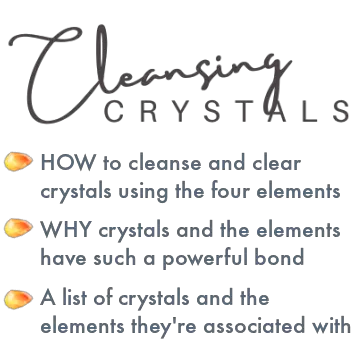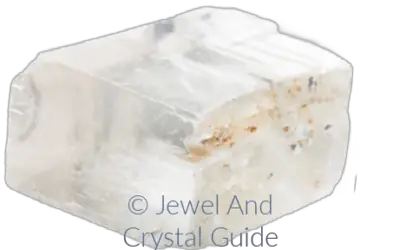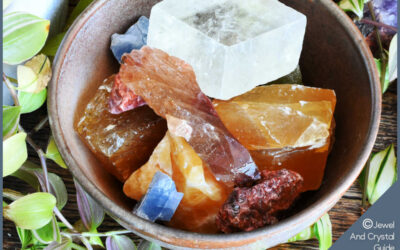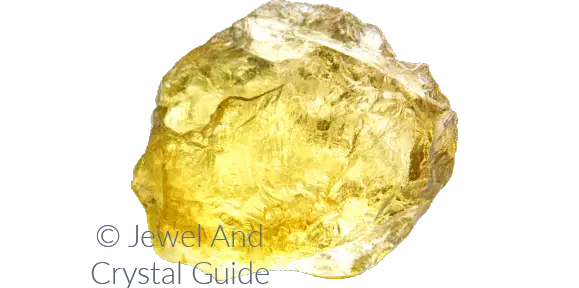
What is citrine
Citrine is a light yellow to burnt orange or golden red quartz crystal. The name “citrine” comes from the French word “citron,” which means lemon. It got the name because of its citrusy colors.
Citrine forms in nature or in a kiln, which is a type of oven.
All citrine starts out as smoky quartz or amethyst. When one of these crystals is heated to the right temperature under the right conditions, it turns yellow and becomes citrine.

Natural citrine tends to have a pale to medium yellow color, while heat-treated crystals often have a deeper orange or reddish-brown hue.
Citrine is valued for its beauty and is often seen in jewelry, like these rings, earrings, necklaces, and bracelets on Amazon.
What citrine is good for
Citrine is good for anyone looking for abundance, prosperity, and success. The crystal attracts wealth and positive energy, stimulates motivation and creativity, and brings happiness and self-confidence.
Citrine also has cleansing and revitalizing properties, making it useful to clear stagnant energy and recharge your own energy.
Here’s my complete list of what citrine is good for and what it will bring you.
Other names for citrine
Citrine is usually just called citrine but here are a few other names that some people call the crystal:
Gold Topaz: Citrine can be confused with topaz because they both have a similar yellow color. Because of this, citrine is sometimes called “gold topaz” or “Spanish topaz.”
Lemon Quartz: Lemon quartz is a light-yellow citrine, like the color of a beautifully ripe lemon. Some people use the name “lemon quartz” for all shades of citrine.
Madeira Citrine: You might hear citrine with deep orange or reddish-brown shades, like the color of Madeira wine, being called Madeira citrine.
Sunstone: Citrine is sometimes called “sunstone” because it has vibrant, sun-like hues. But the name “sunstone” is also used for a different type of feldspar mineral, so it’s important to make sure you know which one is being talked about when you hear the word sunstone.
Yellow Quartz: Citrine is quartz crystal. It’s sometimes referred to as “yellow quartz” because of its color.
Colors of citrine
Citrine comes in yellow, orange and brown colors, ranging from pale yellow to deeper hues. Its color is either created in nature or by man in a hot oven.
Citrine versus other crystals
The difference between citrine and yellow topaz
Citrine and yellow topaz are completely different crystals, though both crystals are yellow.
Citrine is a quartz crystal that forms in six-sided hexagonal prisms, like a honeycomb.
Yellow topaz is a silicate crystal with long prisms that have straight sides meeting at right angles.
Find out more about the differences between citrine and yellow topaz in my easy guide here.
The difference between citrine, amethyst and smoky quartz
All citrine starts out as amethyst or smoky quartz but none of them are the same crystal.
Here’s why:
Quartz crystals are named by their color. At this point we need to remember that amethyst is purple, smoky quartz is brown or black, and citrine is yellow.
When amethyst or smoky quartz get hot under the right conditions, they turn yellow and become citrine.
As soon as a quartz crystal changes color, it’s given another name. So, once amethyst or smoky quartz turns yellow, it’s citrine and another crystal in its own right.
Citrine versus amber
Citrine and amber are not the same thing, even though they can look a lot like each other. Citrine is yellow quartz crystal, but amber is fossilized tree resin with a golden or yellow-brown color.
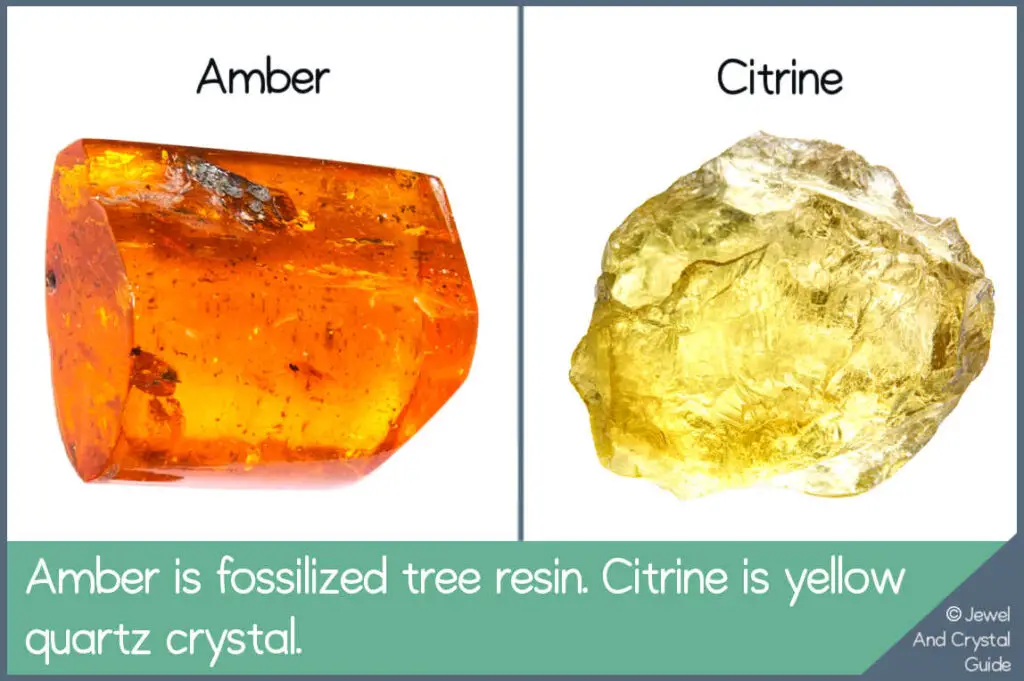
Citrine is a mineral formed through geological processes, while amber is organic and has historical significance.
Want to know more? Check out my blog post on all the differences between amber and citrine.
Is citrine expensive?
The cost of citrine depends on the quality, color, and size of the piece, as well as how many people want to buy it and how much is available.
A medium-quality citrine gemstone costs about $5 to $20 per gram. Citrine is not as expensive as some other gemstones, but high-grade citrine will set you back up to $40 or more per gram.
Here is a table with the average price ranges of citrine per gram:
| Quality | Average Price Range Per Gram (USD) |
| Low-grade citrine | Less than $5 |
| Medium-grade citrine | $5 – $20 |
| High-grade citrine | $10 – $40 |
Where to keep citrine
The best places to keep citrine are on your body, in your purse or wallet, in a dreamcatcher, and in a creative or work space. Put citrine wherever you need to feel happier, calmer, more confident, and inspired.
Click here to get all my ideas on where to keep your citrine and why.
How to cleanse and charge citrine
Citrine can be cleansed and charged in nature, using earth, fire, wind, or water. Put the crystal in healthy soil, the smoke of a burning smudge or incense stick, in sunlight, or in your own breath to purify and revitalize it.
Here’s a list with instructions on all the ways to safely cleanse and charge citrine.
Once you’ve charged citrine, it’s good to use affirmations like these to ask the crystal for what you need.
How to tell if citrine is real
There are three kinds of citrine on the market: natural citrine made in nature, man-made citrine made in a kiln, and imitation citrine, which is usually made from glass.
If you have a citrine crystal and you want to know if it’s natural, then the best way to tell is by looking at it.
Natural citrine is yellow throughout, with only slight shade variations and some translucency where light shines through.
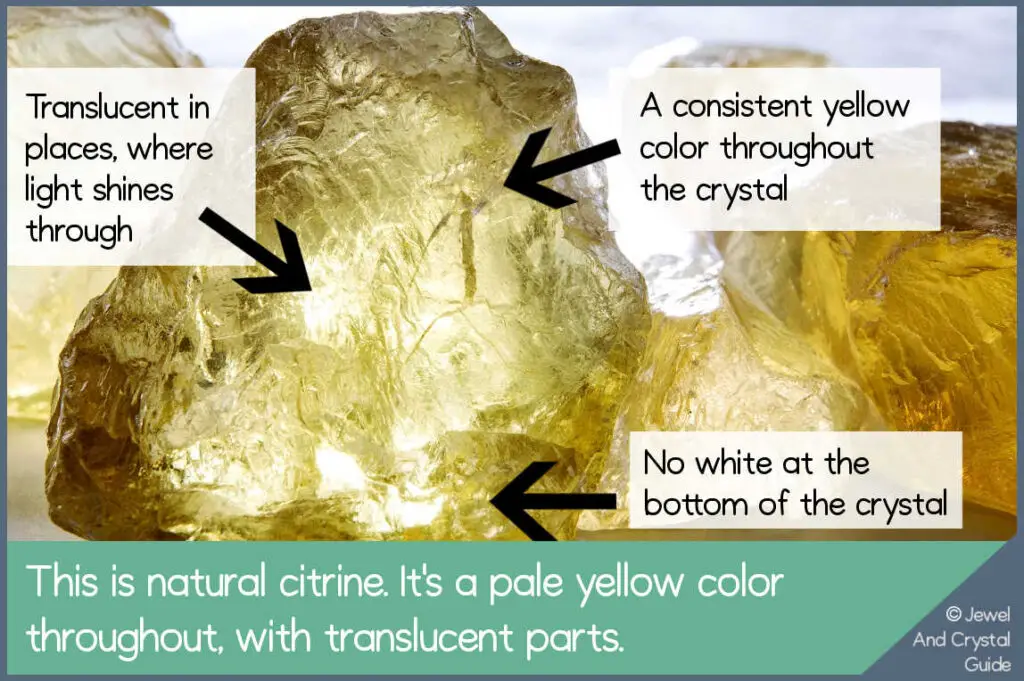
Who should wear citrine
Citrine is the birthstone for all Scorpios born in November. It’s good for Scorpios to wear citrine as the crystal brings them gifts, like success, wealth, joy, confidence, and protection.
While anyone else can wear citrine, Aries, Taurus, and Gemini are believed to benefit most from this crystal because of their astrological properties and what citrine brings.
Here’s what each zodiac sign gets from wearing citrine.
Want to remember this? Save this post on A Guide To Amazonite to your favorite Pinterest Board below!







